Hong Kong, China – February, 2011
Shortly after arriving I once joined a group of new friends for a department store excursion for various supplies. While checking out, the cashier was curious to know where we were from, and upon learning she declared “I’m so happy you Americans are here!” While that particular choice of phrasing might have come off a bit stronger than she intended, we nevertheless appreciated the warm welcome while being so far from home.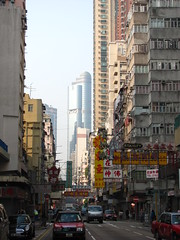
Hong Kong has a reputation as “China for beginners”, due to its longstanding British colonial influence that has brought many western traditions and amenities that are lacking from the mainland. However, that difference has become much less pronounced in recent years, and even in 2011 I was questioning the extent of that wisdom. A big part of it is that the mainland is rapidly integrating with global standards, but it’s also a little true that Hong Kong is becoming a little bit more like the mainland, as more Mandarin-speakers have access to Hong Kong’s tourism market, or even its labor market. I wasn’t culturally educated enough to suss out all the differences between Hong Kong and mainland influences that I witnessed at a surface level in the city. What I could tell was that Hong Kong never felt unwelcoming or alienating, even if the culture itself was in many ways more foreign to me than any I encountered in Europe. Despite not speaking a word of the language, within a week or two I had mastered my Octopus Card (the Hong Kong equivalent of London’s Oyster Card) and was completely at ease using public transit to explore the city alone.
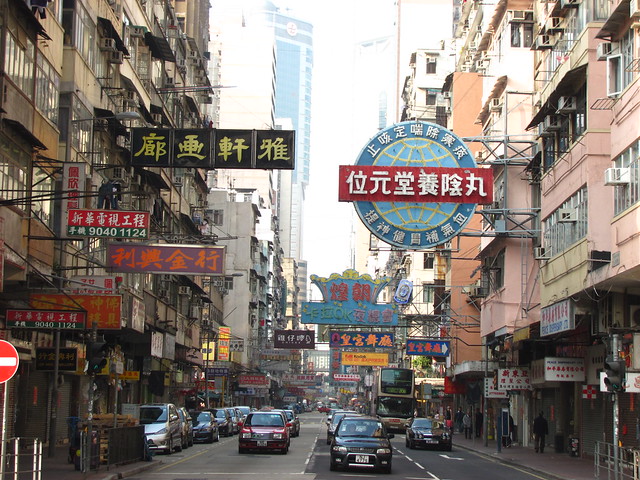
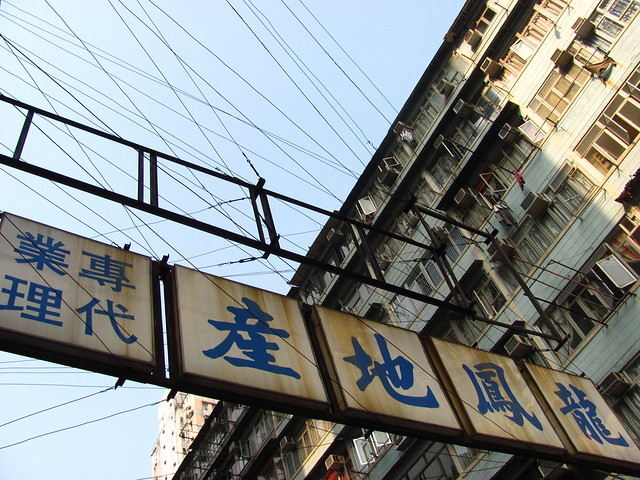

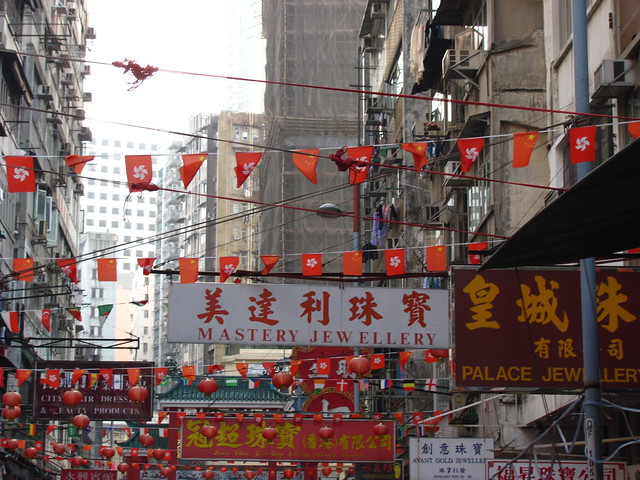
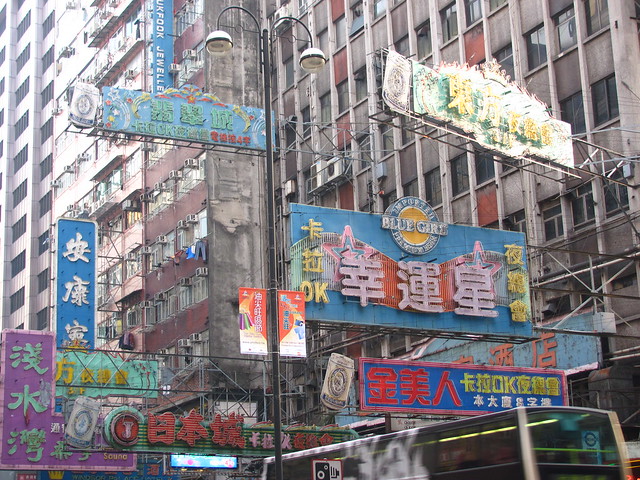
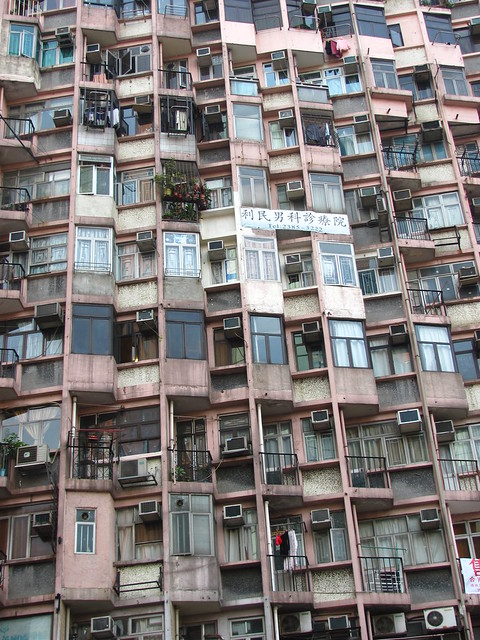
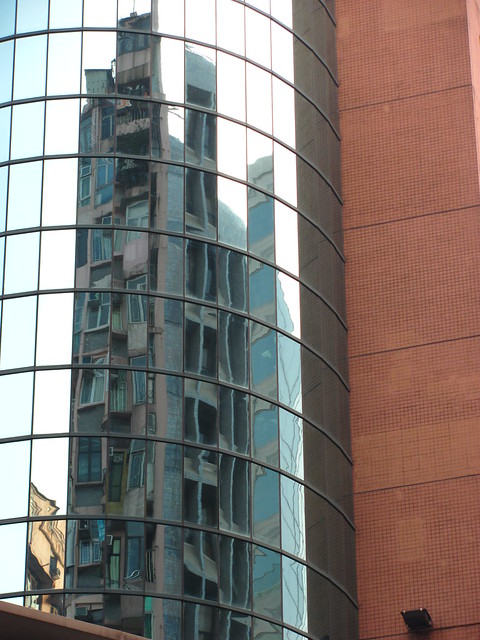 A very serious game of Chinese Chess:
A very serious game of Chinese Chess: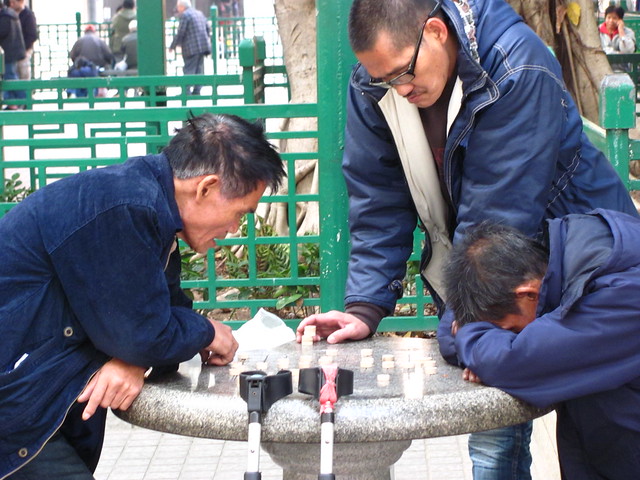
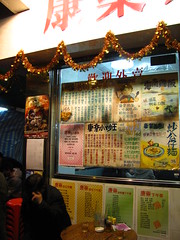 Yet even if I could capture pictures of a city by myself, it was often the case that I went with others, either on student-led tours or with the international friend group that my cousin and I were a part of. One of our favorite places to visit was a dining establishment known informally as “Mr. Wong’s”. (I’m not sure it had a formal Chinese name, much less an English one.) Mostly located in an alley, the place was run by a man known as Mr. Wong, who spoke extremely broken Chinglish yet nevertheless would converse at length with much excitement and animation whenever a group of foreign students came to visit, which was often. I don’t know who in our group originally found this place, but for a single very low price (I think HK$50 per person, roughly US$6.50), Mr. Wong would provide our table unlimited beer and “Chinese” food dishes until we could eat no more. I use air quotes because I can’t confirm the authenticity of anything that was put in front of us (once we were served a plate of reheated Chicken McNuggets) but it was usually tasty, and always a memorable experience. I later heard a rumor that Mr. Wong had closed his restaurant in order to run for a seat in local government.
Yet even if I could capture pictures of a city by myself, it was often the case that I went with others, either on student-led tours or with the international friend group that my cousin and I were a part of. One of our favorite places to visit was a dining establishment known informally as “Mr. Wong’s”. (I’m not sure it had a formal Chinese name, much less an English one.) Mostly located in an alley, the place was run by a man known as Mr. Wong, who spoke extremely broken Chinglish yet nevertheless would converse at length with much excitement and animation whenever a group of foreign students came to visit, which was often. I don’t know who in our group originally found this place, but for a single very low price (I think HK$50 per person, roughly US$6.50), Mr. Wong would provide our table unlimited beer and “Chinese” food dishes until we could eat no more. I use air quotes because I can’t confirm the authenticity of anything that was put in front of us (once we were served a plate of reheated Chicken McNuggets) but it was usually tasty, and always a memorable experience. I later heard a rumor that Mr. Wong had closed his restaurant in order to run for a seat in local government.
The extended social circle on these group outings included students from US, Canada, Mexico, Australia, Ireland, Netherlands, Germany, Austria, Sweden, France, Italy, Turkey, South Korea, and Czech Republic. Below: Nancy, me, Caroline, Mike, Jonathan, Lina, and Lieke.
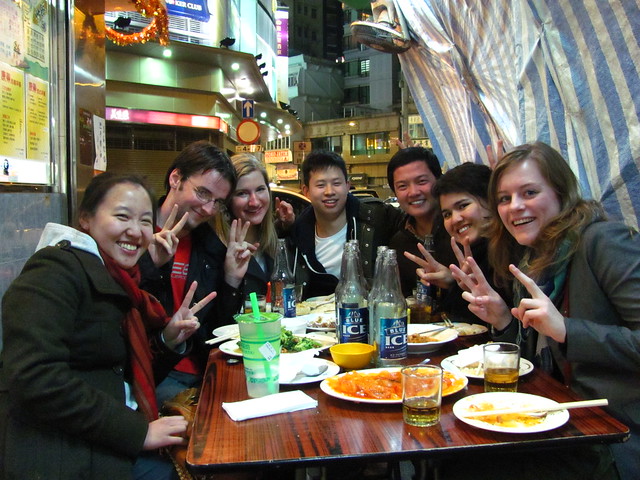 One of these group outings included taking a free tour of the observation deck atop the Two International Finance Centre skyscraper.
One of these group outings included taking a free tour of the observation deck atop the Two International Finance Centre skyscraper.
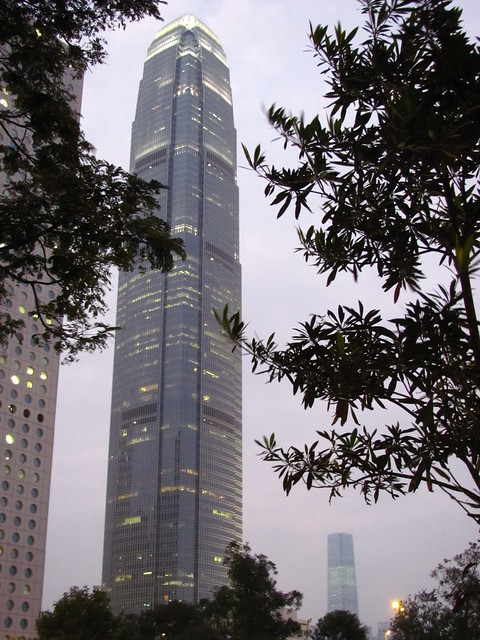
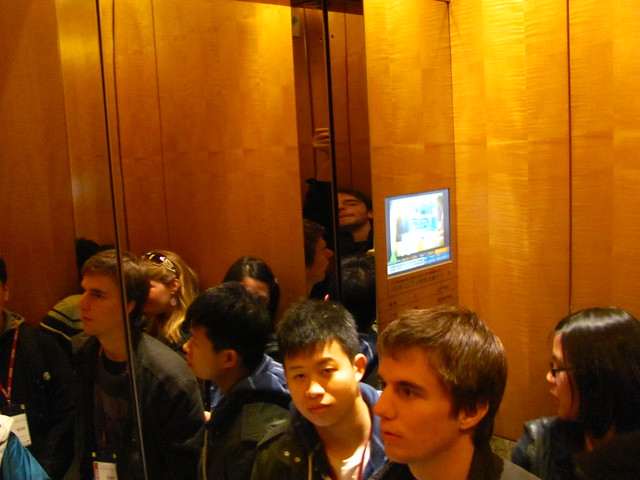 At 1,362 feet it’s the second tallest building in Hong Kong, and is famed for its appearance in The Dark Knight. Unfortunately the public observation deck is only partway up the tower, so the view was slightly anticlimactic when we found ourselves at eye-level with many of the surrounding towers. As part of the International Finance Centre, the deck also includes a small exhibit about Hong Kong’s currency. And it’s free, so no complaints.
At 1,362 feet it’s the second tallest building in Hong Kong, and is famed for its appearance in The Dark Knight. Unfortunately the public observation deck is only partway up the tower, so the view was slightly anticlimactic when we found ourselves at eye-level with many of the surrounding towers. As part of the International Finance Centre, the deck also includes a small exhibit about Hong Kong’s currency. And it’s free, so no complaints.

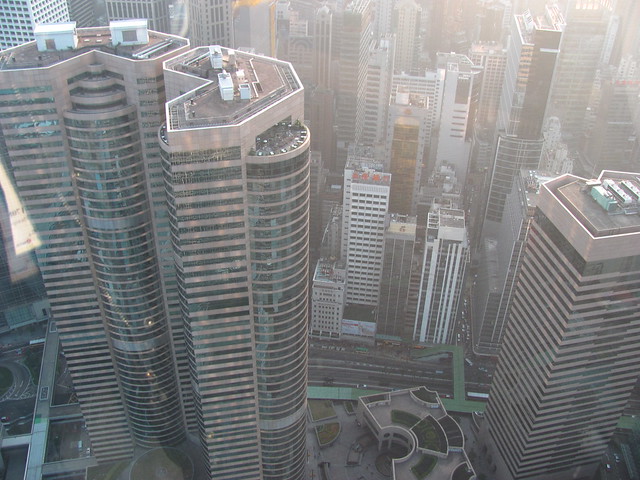
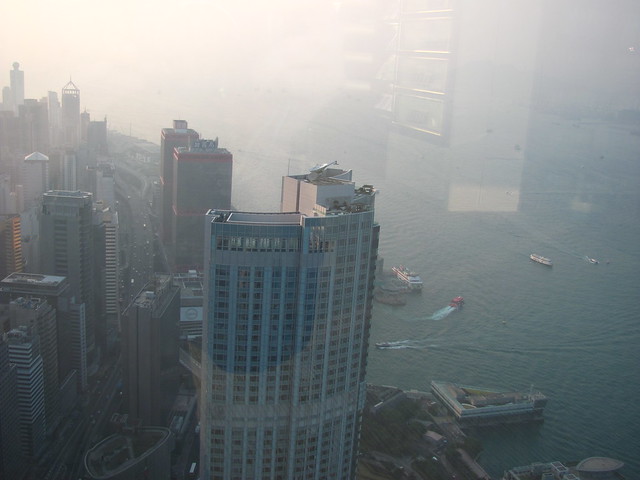
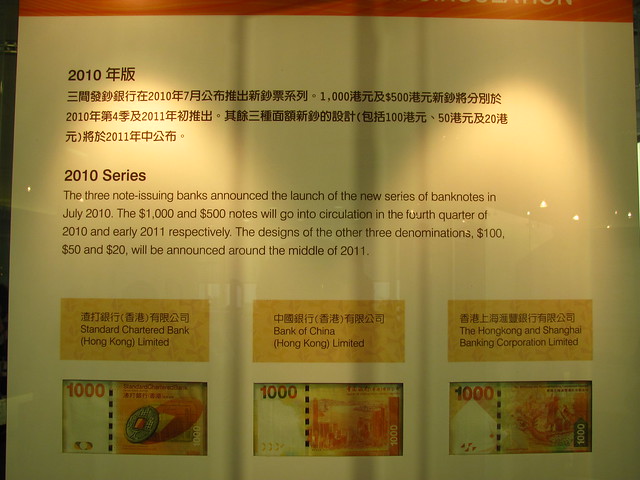 The HK$10 banknote seen in the top of this exhibit is particularly interesting. Unlike the rest of Hong Kong’s paper currency, the new version of this note is made with a polymer, features a transparent window, and comes in a dazzling technicolor design that looks and feels more like a toy. First time I got one I almost didn’t want to give it away, but since it’s valued at around US$1.25 they’re incredibly common to come by.
The HK$10 banknote seen in the top of this exhibit is particularly interesting. Unlike the rest of Hong Kong’s paper currency, the new version of this note is made with a polymer, features a transparent window, and comes in a dazzling technicolor design that looks and feels more like a toy. First time I got one I almost didn’t want to give it away, but since it’s valued at around US$1.25 they’re incredibly common to come by.
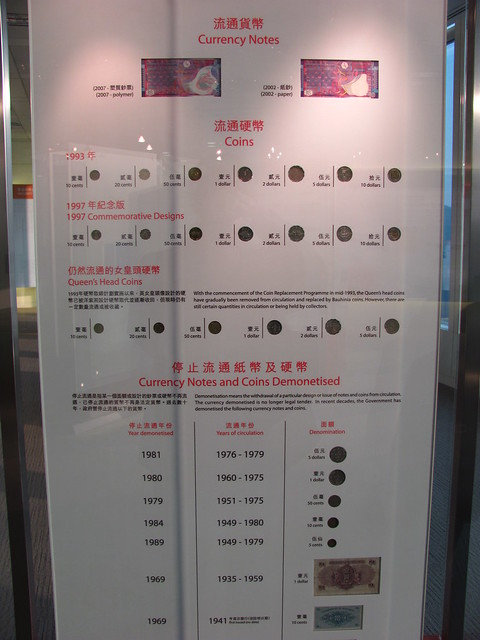
 However, I think we were all a bit tired this day. We kept very active schedules these first few weeks.
However, I think we were all a bit tired this day. We kept very active schedules these first few weeks.
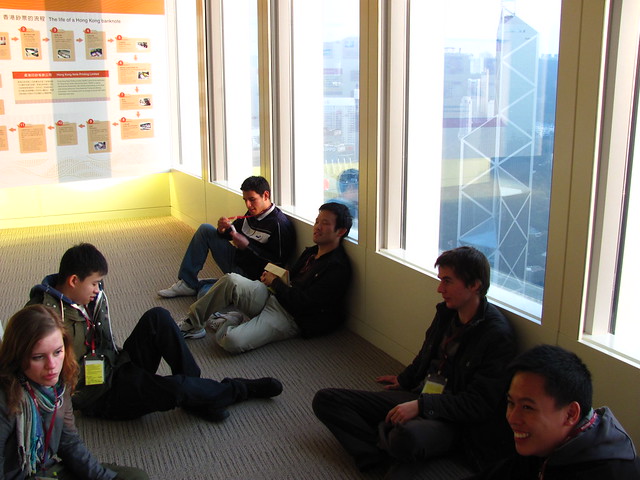
 Most of my exploration of Hong Kong happened during the first month, especially during the Lunar New Year holidays before classes began, as later on our attention turned to both study and travel outside the territory. While much of this was self-guided, several were offered by the university (including the tours of Lantau Island and Macau). One of these they called the “Fortune Seeking Tour”, which involved visiting a number of sites around Hong Kong with special significance during the New Year. The first of these places to visit was the Lam Tsuen Wishing Tree and Tin Hau Temple.
Most of my exploration of Hong Kong happened during the first month, especially during the Lunar New Year holidays before classes began, as later on our attention turned to both study and travel outside the territory. While much of this was self-guided, several were offered by the university (including the tours of Lantau Island and Macau). One of these they called the “Fortune Seeking Tour”, which involved visiting a number of sites around Hong Kong with special significance during the New Year. The first of these places to visit was the Lam Tsuen Wishing Tree and Tin Hau Temple.


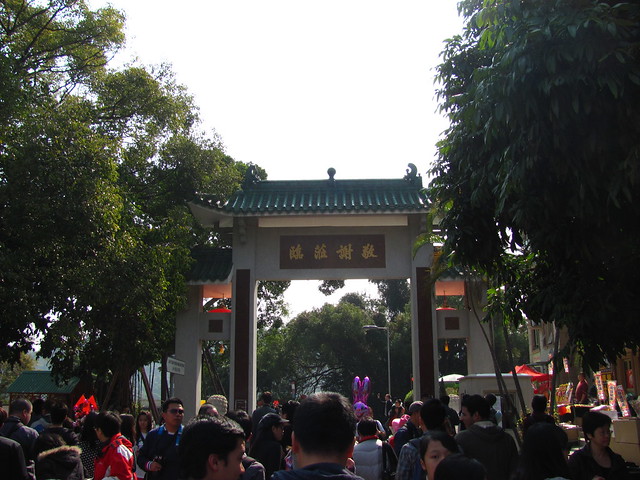 Part of the wishing tree tradition is to throw a paper wish tied to an orange and try to get it to land in the tree. This practice took its toll on the original tree over time, so now it stands supported and unbothered while the wishing traditions continue elsewhere.
Part of the wishing tree tradition is to throw a paper wish tied to an orange and try to get it to land in the tree. This practice took its toll on the original tree over time, so now it stands supported and unbothered while the wishing traditions continue elsewhere.
 You can also write your wishes and hang them on the wall.
You can also write your wishes and hang them on the wall.
Now this artificial tree is designed to fully withstand holding the plastic oranges and notecards tossed by thousands of Hong Kongers during Lunar New Year.
Unfortunately the lightweight plastic orange tethered to a paper drag made getting it aloft into the tree branches more difficult than it first appeared. At least that’s the excuse I’m using in this rather embarrassing video.
2011 was the Year of the Rabbit. Decorative rabbits were everywhere throughout Hong Kong, which occasionally confused me into thinking a massive Easter celebration had started too early.
They also had this plaza featuring small shrines to all twelve animals of the Chinese lunar calendar.
Here I am posed with the animal of my year, the Dragon. (Obviously the best one!)
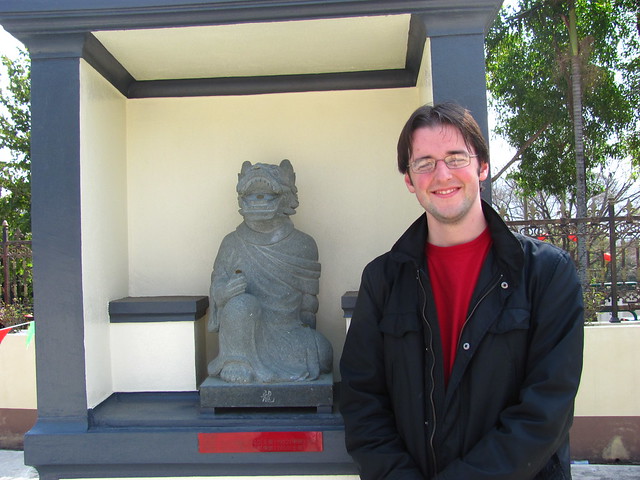 Wishes strewn everywhere like it’s a Disney night show.
Wishes strewn everywhere like it’s a Disney night show.
 I forget what this was called but it was tofu in a sweet ginger broth, sort of desserty in nature. I was only able to finish half of it because I found the ginger wasn’t sitting too well on my otherwise empty stomach.
I forget what this was called but it was tofu in a sweet ginger broth, sort of desserty in nature. I was only able to finish half of it because I found the ginger wasn’t sitting too well on my otherwise empty stomach.
 We drove by Che Kung Temple which was to be our next stop, but never even left the bus when we noticed the huge line in front of the temple… wrapping down the street… under a subway… and back up the other side of the street… several times.
We drove by Che Kung Temple which was to be our next stop, but never even left the bus when we noticed the huge line in front of the temple… wrapping down the street… under a subway… and back up the other side of the street… several times.
 So we ended up at Wong Thai Sin temple, which was a bit more efficient at moving the crowds through.
So we ended up at Wong Thai Sin temple, which was a bit more efficient at moving the crowds through.
 According to my history, in 1915 two Taoist priests brought a portrait of the Taoist god Master Wong Tai Sin to Hong Kong and set up a shrine for it. They later ended up building a temple in Kowloon in 1921. It opened to the public for the first time in 1934, and is now one of the most popular temples in Hong Kong, as you can see.
According to my history, in 1915 two Taoist priests brought a portrait of the Taoist god Master Wong Tai Sin to Hong Kong and set up a shrine for it. They later ended up building a temple in Kowloon in 1921. It opened to the public for the first time in 1934, and is now one of the most popular temples in Hong Kong, as you can see.
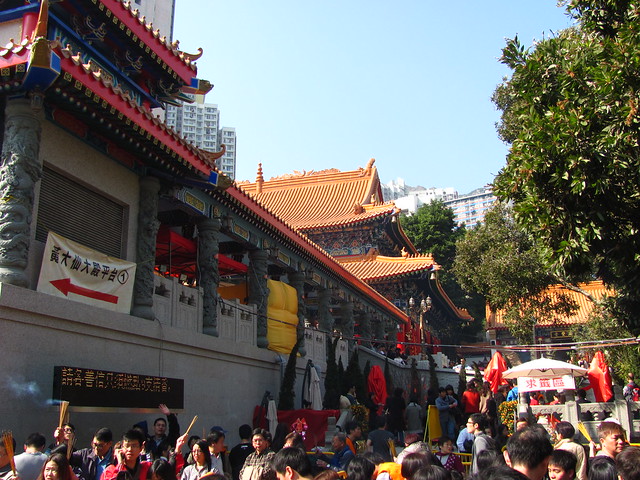
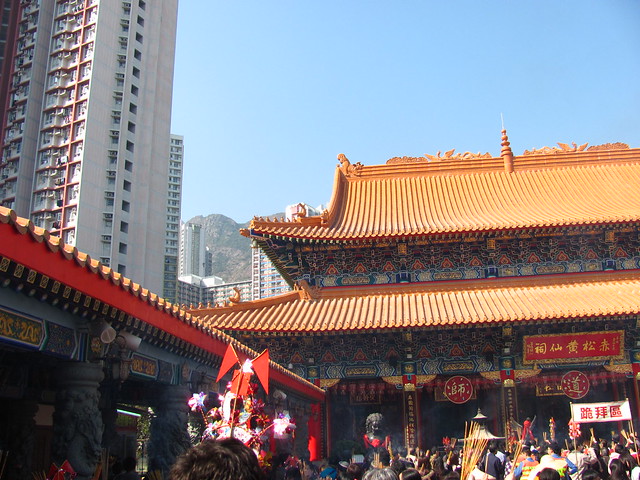
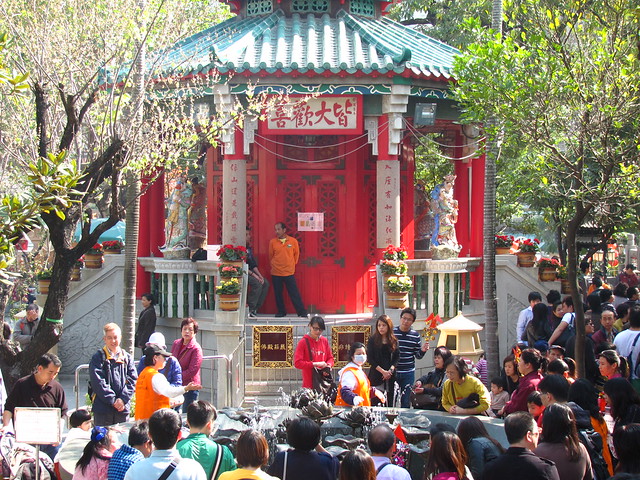
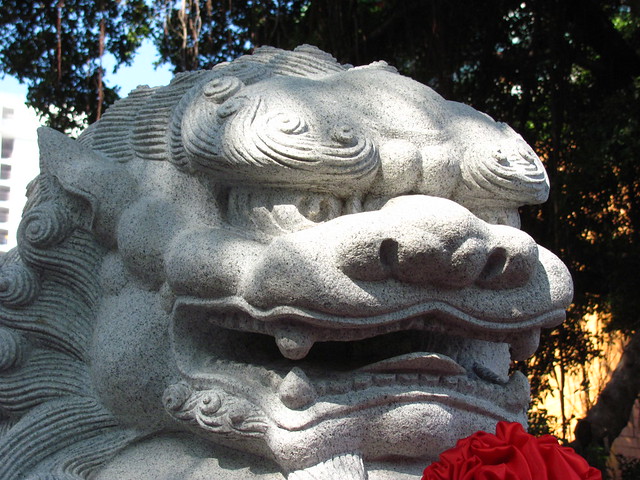
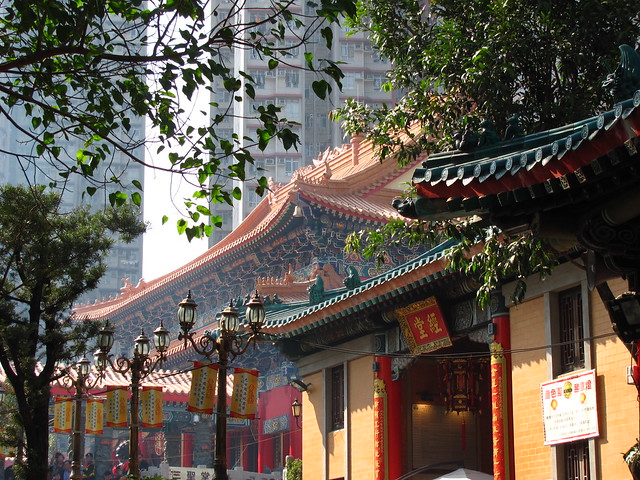
 Our last stop of the Fortune Seeking Tour was at the Chi Lin Nunnery. Probably my favorite stop of the tour, and not just because the name is fun to say, though the fact that it wasn’t overcrowded helped. The picturesque temple complex includes a nunnery, temple halls, Chinese gardens, and even a vegetarian restaurant. It was founded in 1934 but rebuilt in 1990 in the Tang Dynasty style of architecture, which uses interlocking wood with no nails and are the only modern structures in Hong Kong built in this style.
Our last stop of the Fortune Seeking Tour was at the Chi Lin Nunnery. Probably my favorite stop of the tour, and not just because the name is fun to say, though the fact that it wasn’t overcrowded helped. The picturesque temple complex includes a nunnery, temple halls, Chinese gardens, and even a vegetarian restaurant. It was founded in 1934 but rebuilt in 1990 in the Tang Dynasty style of architecture, which uses interlocking wood with no nails and are the only modern structures in Hong Kong built in this style.
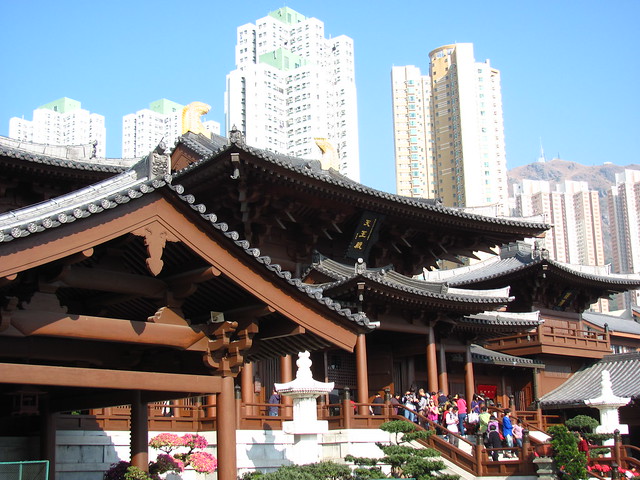


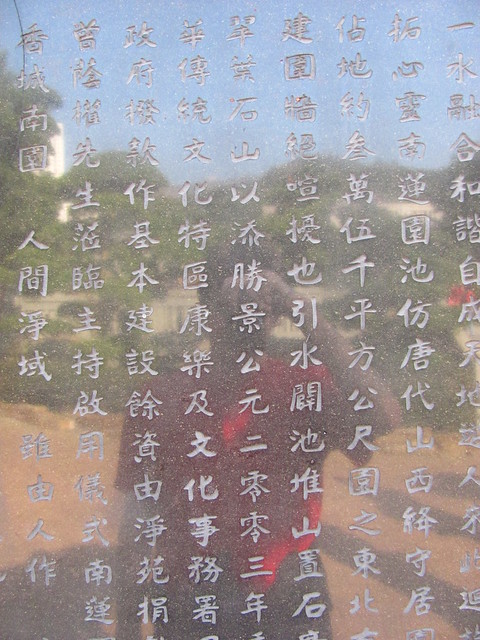
 The restaurant is behind this waterfall which wouldn’t look out of place in a theme park.
The restaurant is behind this waterfall which wouldn’t look out of place in a theme park.
The juxtaposition of old-looking new nunnery and new-looking new high-rises made for some interesting photos.
I’ll conclude Chi Lin Nunnery with this surprisingly descriptive poison warning.
 On a much gloomier February day, we took our final guided HKUST trip out to Stanley on the far southern side of Hong Kong Island. The Stanley open air market was our first stop.
On a much gloomier February day, we took our final guided HKUST trip out to Stanley on the far southern side of Hong Kong Island. The Stanley open air market was our first stop.
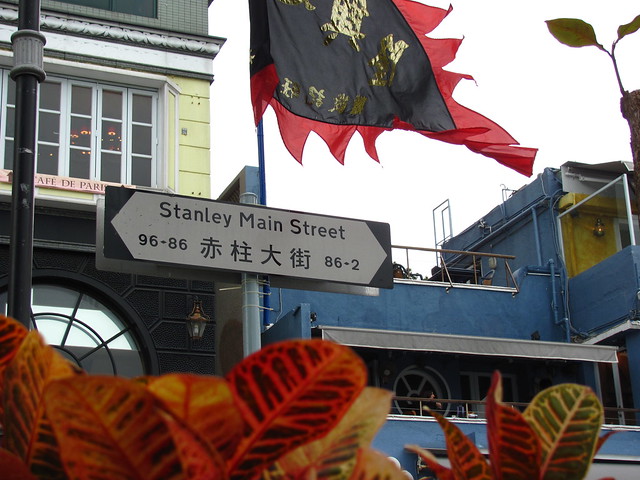 Like all of Hong Kong’s markets, there was a variety of goods on sale, from fruit…
Like all of Hong Kong’s markets, there was a variety of goods on sale, from fruit…
…to flowers…
…and of course some communist propaganda apparel. (Oh, to return to the days when the U.S. president as foreign-controlled authoritarian dictator was only a t-shirt joke.)
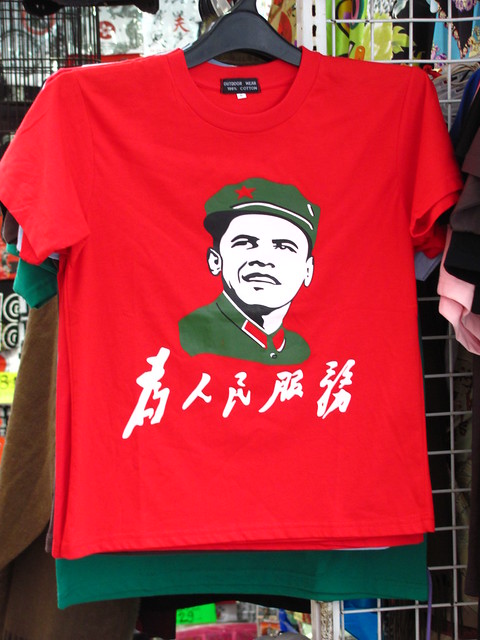 We also got this fried waffle treat at one of the market stands. It was good, but I was the only one who was convinced it had the taste of tofu inside.
We also got this fried waffle treat at one of the market stands. It was good, but I was the only one who was convinced it had the taste of tofu inside.
This excursion was part of HKUST’s “buddy” program that paired all international visiting students with a local student who could offer help and promote cross-cultural exchange. Here the crew marches down the street to the tune of what I can only assume was Battle Without Honor or Humanity.
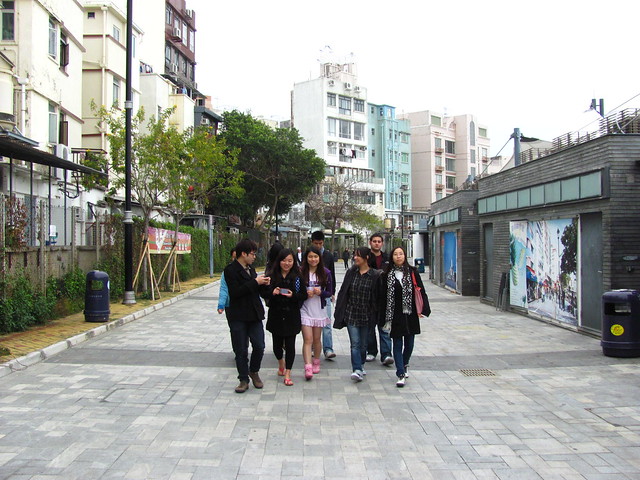 Heading toward the coast of Stanley. (The decidedly non-Chinese name is no doubt attributable to colonialism.)
Heading toward the coast of Stanley. (The decidedly non-Chinese name is no doubt attributable to colonialism.)


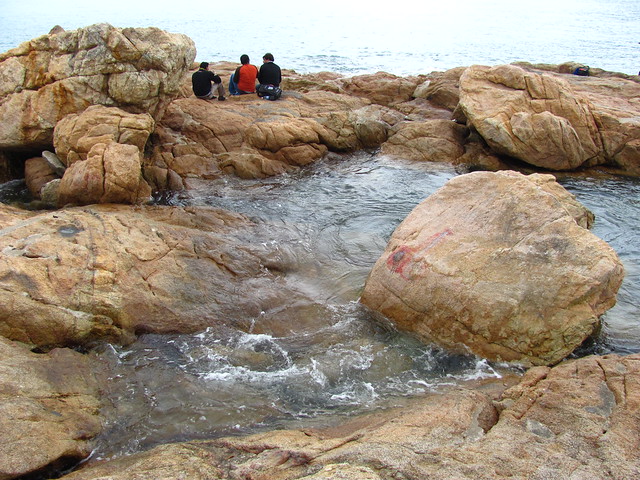
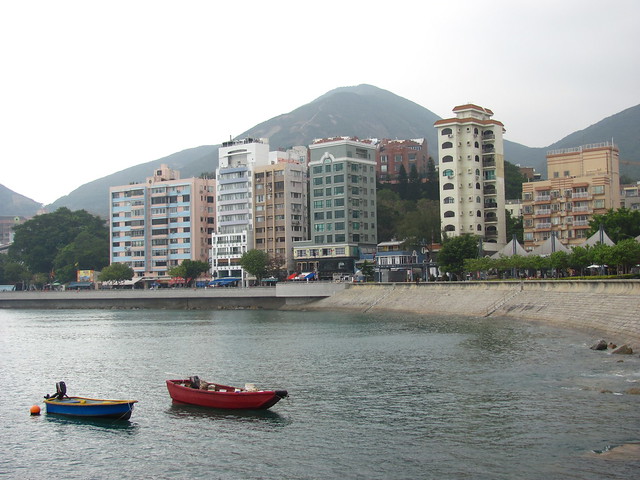 We also made a stop at yet another temple along the coast.
We also made a stop at yet another temple along the coast.
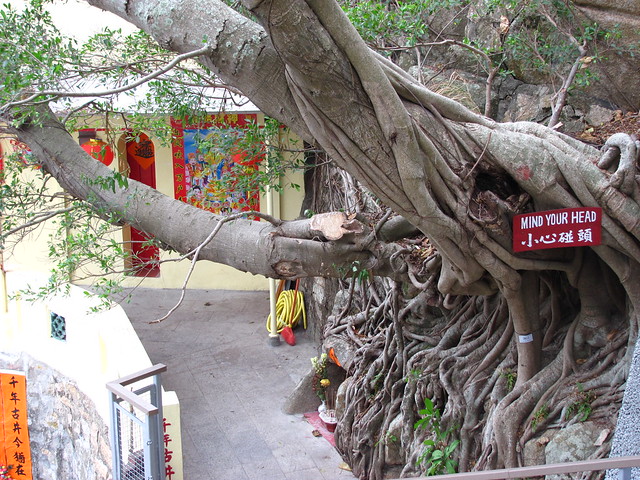
 Feed the lion guardian your candy wrappers for good luck. (Maybe?)
Feed the lion guardian your candy wrappers for good luck. (Maybe?)
 Inside the temple we were able to try the fortune sticks, where you shake a bundle of sticks until one falls out. You read the number and get a matching slip of paper that reads your fortune. I tried it next, where I was told the interpretation was that my luck would be “average”. More specifically, it predicted that I would become a vegetarian and get into conflicts with many people. So I guess I get to look forward to becoming Adolf Hitler?
Inside the temple we were able to try the fortune sticks, where you shake a bundle of sticks until one falls out. You read the number and get a matching slip of paper that reads your fortune. I tried it next, where I was told the interpretation was that my luck would be “average”. More specifically, it predicted that I would become a vegetarian and get into conflicts with many people. So I guess I get to look forward to becoming Adolf Hitler?
They also had a means by which you could ask the Gods any yes/no question you wanted by rolling two sticks of wood and seeing which side they faced. My question would have been: “Is the answer to this question false?”
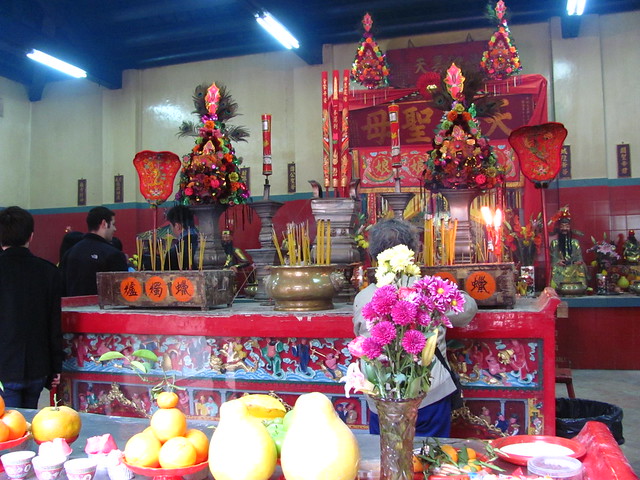 So legend has it if you ask a question after throwing a coin in the basket the turtle will answer it. Not only do I feel concern for the turtle’s well being, I also have reason to worry about where else the coins in my pocket could have been.
So legend has it if you ask a question after throwing a coin in the basket the turtle will answer it. Not only do I feel concern for the turtle’s well being, I also have reason to worry about where else the coins in my pocket could have been.
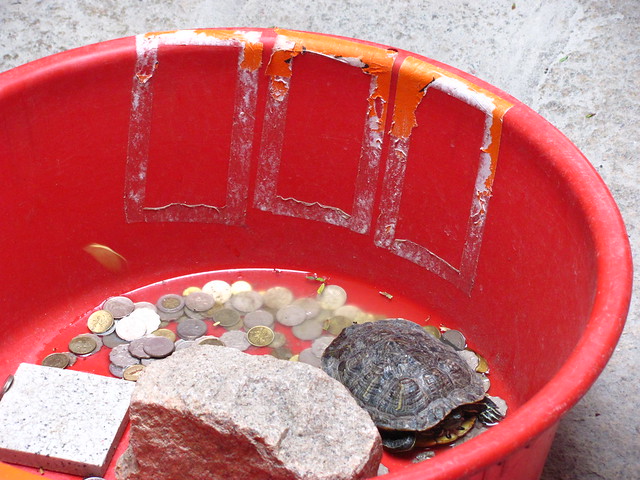 After Stanley, we ascended to one of Hong Kong’s most famous tourist sites: Victoria Peak. This observation deck sits atop the mountains overlooking the skyscrapers on Hong Kong Island.
After Stanley, we ascended to one of Hong Kong’s most famous tourist sites: Victoria Peak. This observation deck sits atop the mountains overlooking the skyscrapers on Hong Kong Island.

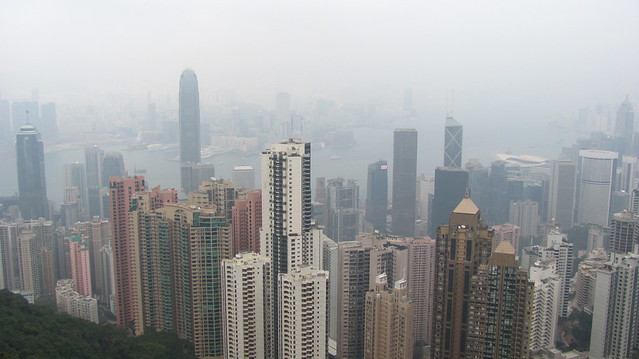
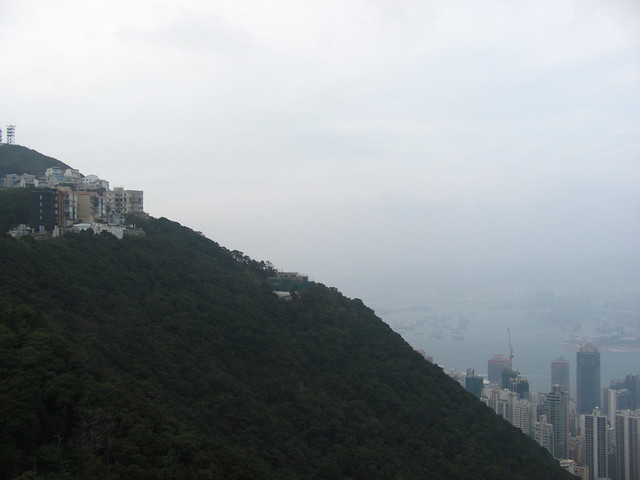 Looking back towards Stanley on the south side of the island.
Looking back towards Stanley on the south side of the island.
 From this vantage we’re about eye-level with the International Finance Centre.
From this vantage we’re about eye-level with the International Finance Centre.
And it looks down on the Bank of China Tower.
 While Hong Kong’s subtropical climate means that there are plenty of warm, sunny days in February, there are still plenty of cool, wet, foggy days as well.
While Hong Kong’s subtropical climate means that there are plenty of warm, sunny days in February, there are still plenty of cool, wet, foggy days as well.
On days such as this, the best thing to do is go to a museum. In this case, a group of five of us went to explore the Hong Kong Museum of Art.
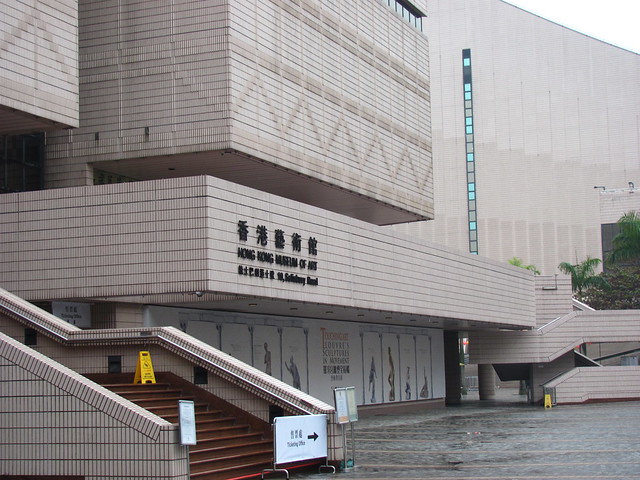 The collection was more of an art history museum than an art gallery, with a focus on 1000+ years of Chinese ceramics and sculpture with the methods and social context of when the pieces were made, and less on the inspiration of the artists who created them that you might associate with a western art museum.
The collection was more of an art history museum than an art gallery, with a focus on 1000+ years of Chinese ceramics and sculpture with the methods and social context of when the pieces were made, and less on the inspiration of the artists who created them that you might associate with a western art museum.
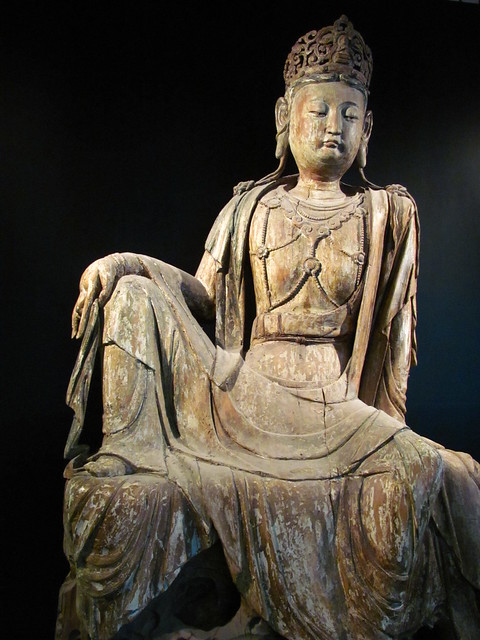

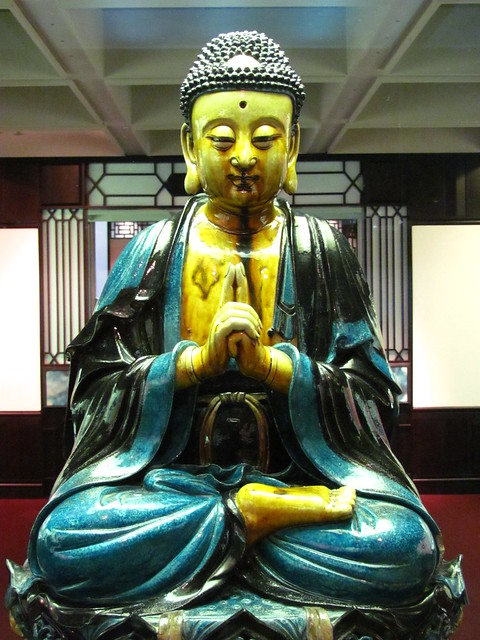
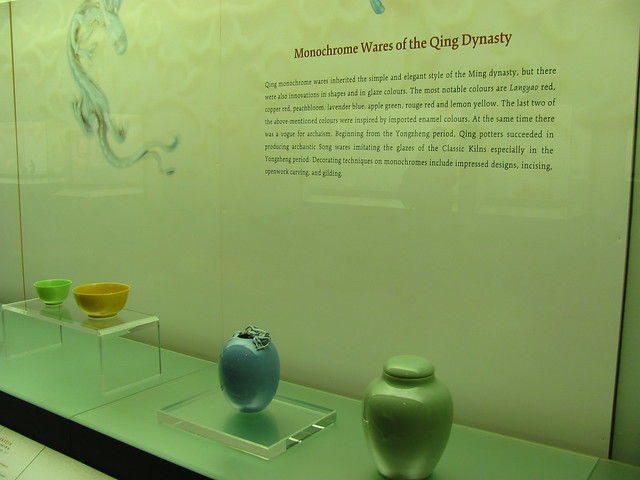


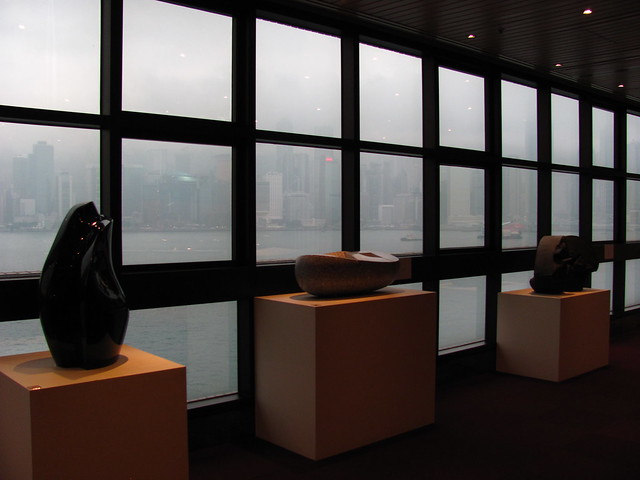 Another of Hong Kong’s most famous (and third tallest) skyscrapers, the delightfully postmodern Central Plaza, also hosts a free public observation deck.
Another of Hong Kong’s most famous (and third tallest) skyscrapers, the delightfully postmodern Central Plaza, also hosts a free public observation deck.
I had been hoping it would be closer to the top of the structure to exceed the height of the IFC observation deck, but this one also proved to only be partway up the tower. It’s somewhat surprising that none of Hong Kongs’ skyscrapers had thought to monetize their observation decks (at least as of 2011); Central Plaza’s deck is very much a “hidden” attraction you have to enquire about at the lobby, with absolutely zero additional amenities for tourists. At least it was a very peaceful, contemplative space to view the city.
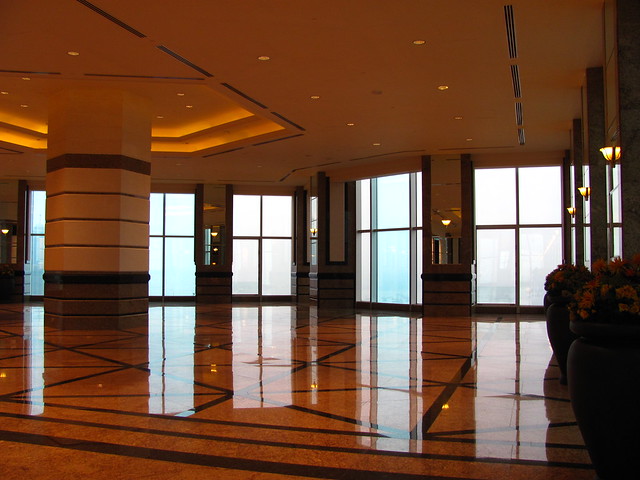
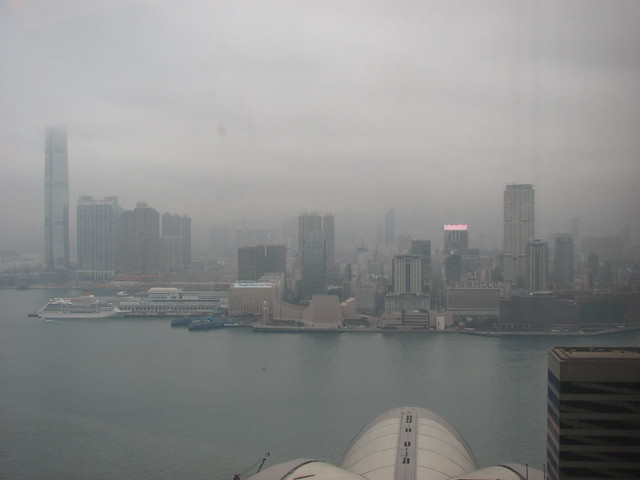
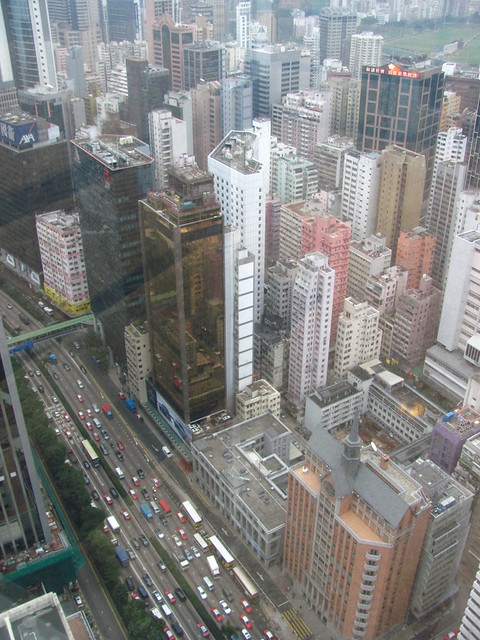

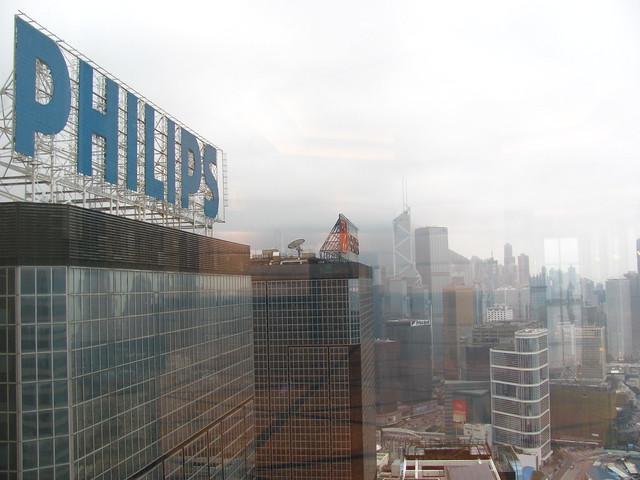 Did you know that Hong Kong has its own Happy Valley? It has nothing to do with the theme park chain all over the mainland, but is in fact Hong Kong’s horse racing track.
Did you know that Hong Kong has its own Happy Valley? It has nothing to do with the theme park chain all over the mainland, but is in fact Hong Kong’s horse racing track.
 Unlike the amusement parks, this Happy Valley wasn’t anyplace I would have ventured to on my own, but with a group of international students organizing the trip together I decided to tag along. It was quite a popular night.
Unlike the amusement parks, this Happy Valley wasn’t anyplace I would have ventured to on my own, but with a group of international students organizing the trip together I decided to tag along. It was quite a popular night.
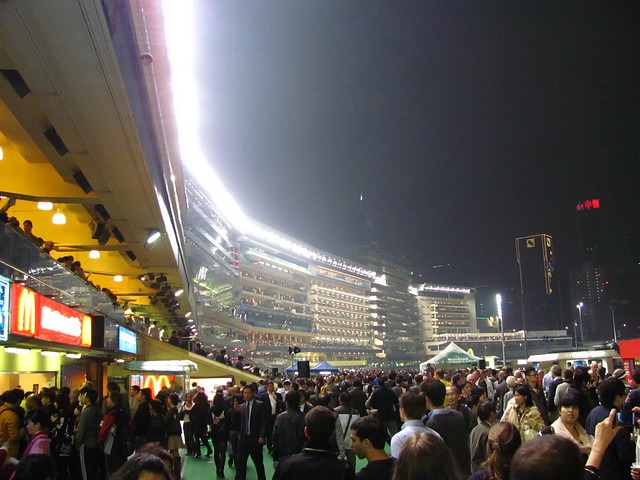
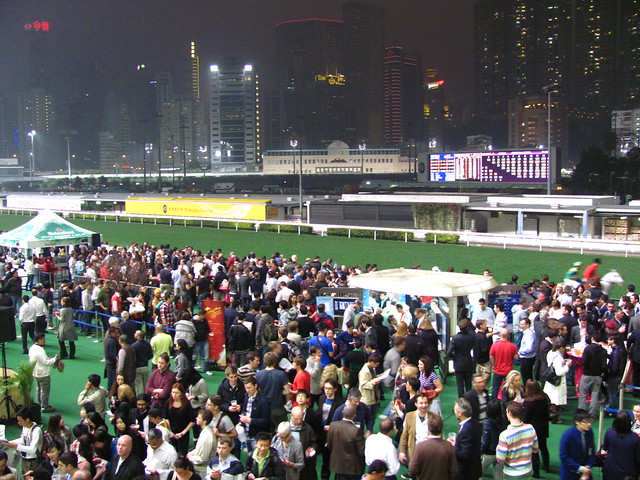 On my first race, I won $11HKD! However, that was after putting down $10, plus another $10 on a losing horse, for a net winnings of -$9…
On my first race, I won $11HKD! However, that was after putting down $10, plus another $10 on a losing horse, for a net winnings of -$9…
My second race I put another $20 down on two horses. Once again, I won $14.50 on one horse (Legend Express, which I was rooting for mostly for the association with a certain Holiday World ride), but lost the other $10.
By my third and final race, I thought I had figured out a strategy, since I realized my previous choices weren’t paying off even if they did win. I put my $20 dollars on two horses that had decently good stats even though neither were favorites to win, but in which I could stand to win $100 and/or $140 if either could win, place or show. Would the gamble pay off?
Not quite, unfortunately; all three of the favorites did in fact finish where expected. Although if my bet on the 4th place horse had come one position ahead I would have walked out with $100HKD.
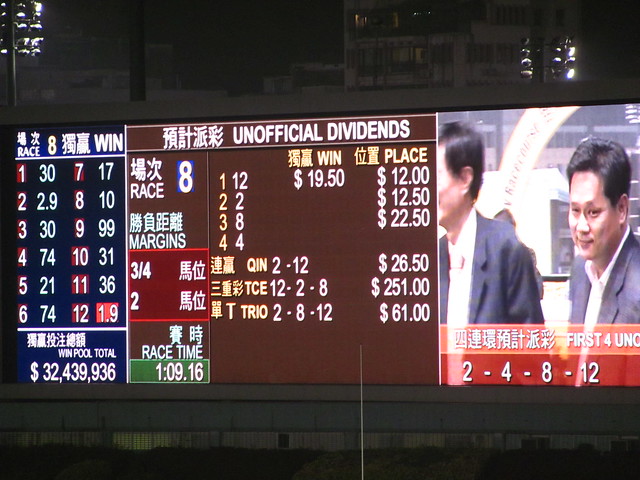 Total money I got back from my two wins was $25.50. That wasn’t counting the $60 I put down on bets, the $10 entry fee, the $15 or so in transport and $32 on McDonald’s. That still equates to less than $12USD for the entire night of entertainment. Part of the fun in gambling in a different currency is you can imagine you’re putting a lot more at stake than you actually are.
Total money I got back from my two wins was $25.50. That wasn’t counting the $60 I put down on bets, the $10 entry fee, the $15 or so in transport and $32 on McDonald’s. That still equates to less than $12USD for the entire night of entertainment. Part of the fun in gambling in a different currency is you can imagine you’re putting a lot more at stake than you actually are.
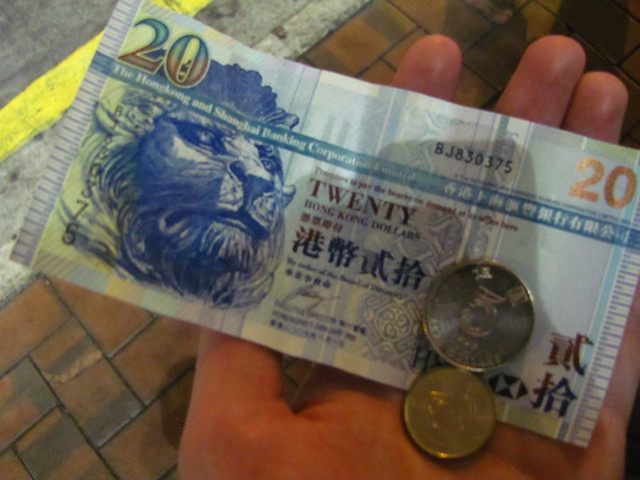 Lunar New Year is a lot like Christmas in that both holidays seem to go on forever. Unlike Christmas where it’s all about anticipating the big day, Lunar New Year spends a significant amount of time after the main holiday with additional festivities. Fifteen days later (and a huge swath of Hong Kong thoroughly explored) we celebrated the last day of the New Year season by visiting a lantern festival in the New Territories north of the city. The lanterns were all of the modern electric variety with colorful, cartoonish designs made to withstand a month outdoors, yet the sheer quantity of them did make for a dazzling experience.
Lunar New Year is a lot like Christmas in that both holidays seem to go on forever. Unlike Christmas where it’s all about anticipating the big day, Lunar New Year spends a significant amount of time after the main holiday with additional festivities. Fifteen days later (and a huge swath of Hong Kong thoroughly explored) we celebrated the last day of the New Year season by visiting a lantern festival in the New Territories north of the city. The lanterns were all of the modern electric variety with colorful, cartoonish designs made to withstand a month outdoors, yet the sheer quantity of them did make for a dazzling experience.
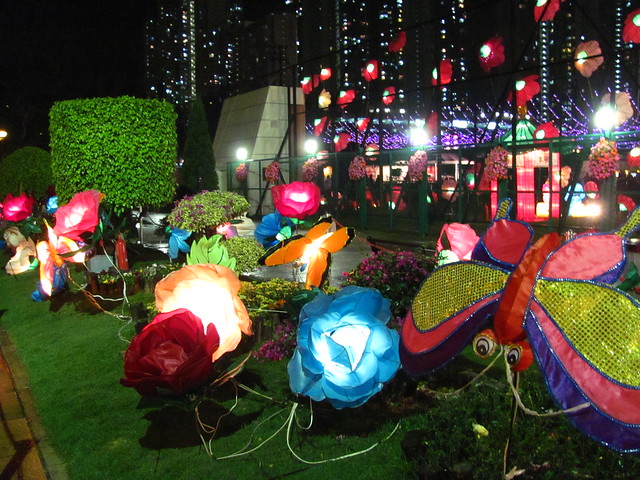
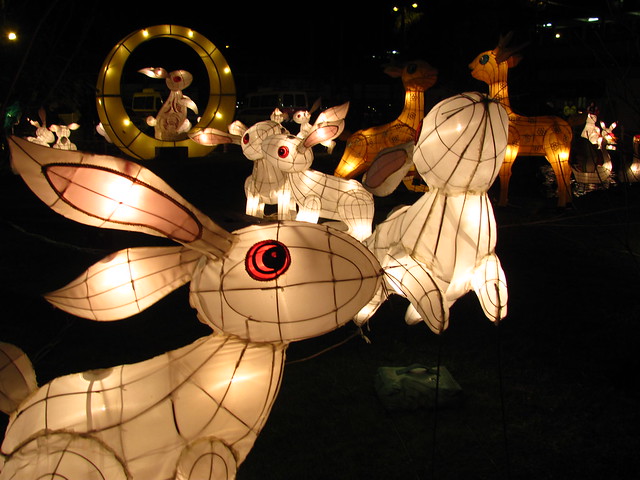



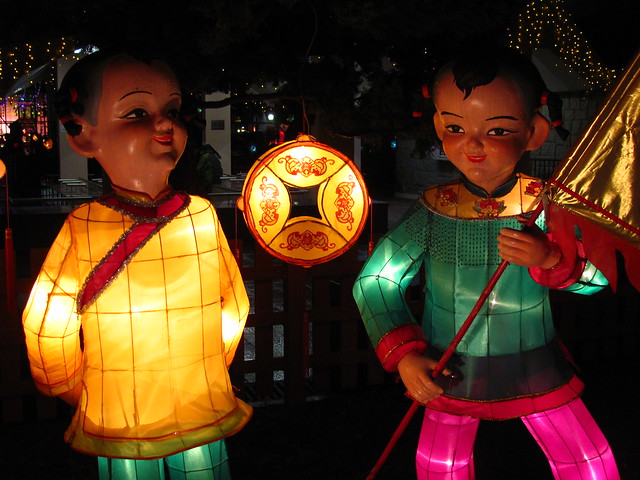

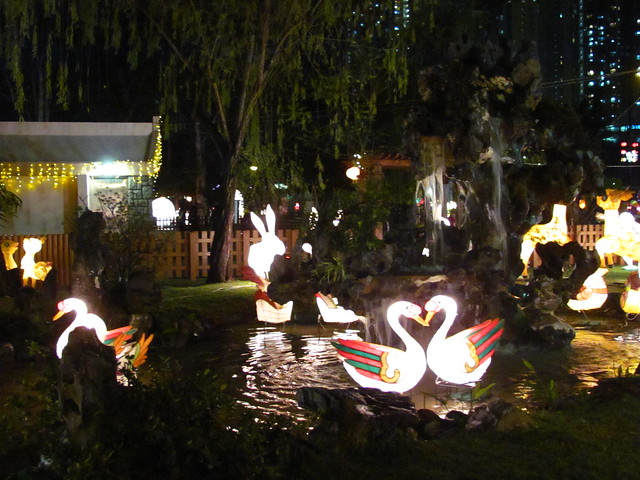
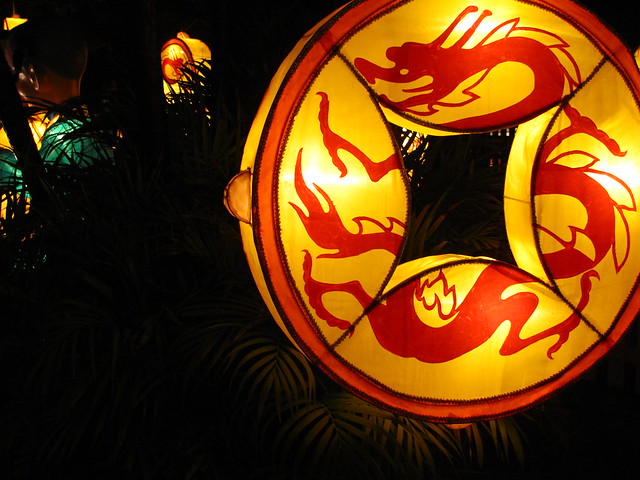
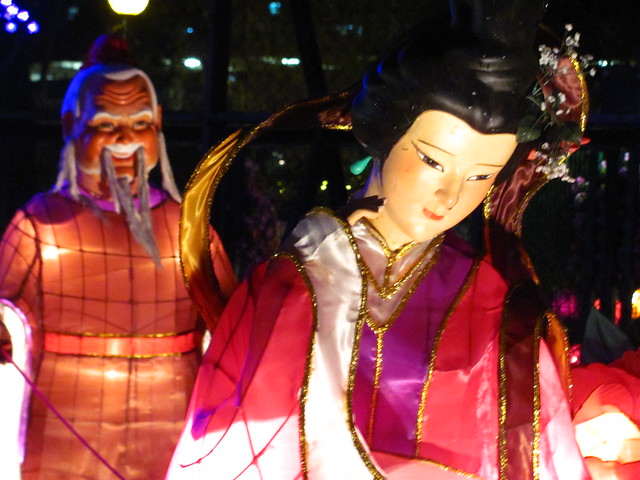
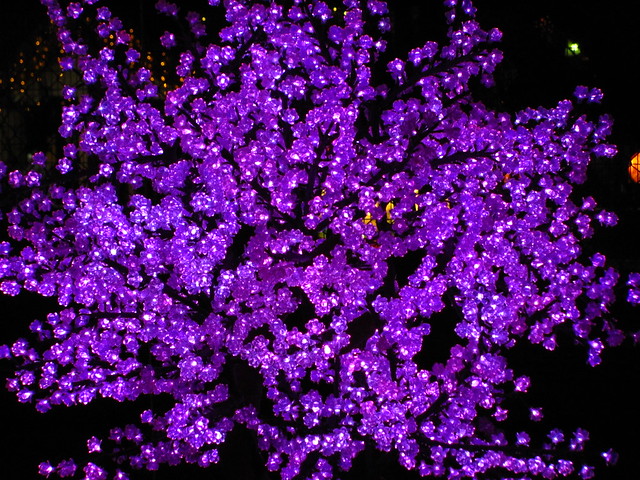

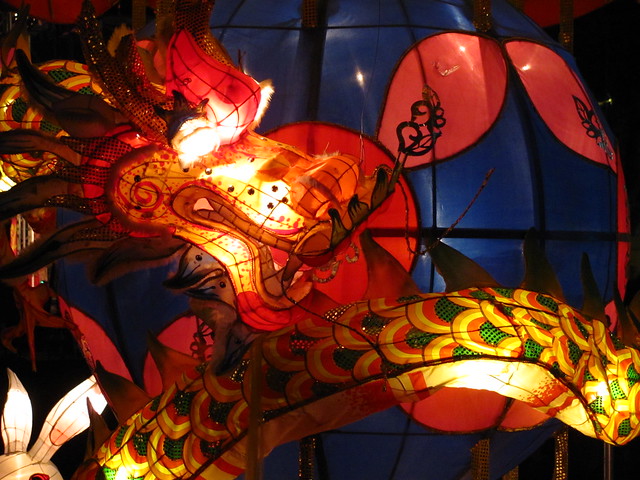 And with that, Lunar New Year was over. By this point I had also had the chance to get to know Hong Kong’s theme parks, Ocean Park and Hong Kong Disneyland, was beginning to focus more of my free time on exploring beyond Hong Kong’s borders, in Guangzhou, Malaysia and Singapore, Chengdu, and Taiwan. However I wasn’t completely done with exploring Hong Kong either, since Lunar New Year announced the arrival of spring, and springtime proved to be a particularly beautiful time to spend in the city.
And with that, Lunar New Year was over. By this point I had also had the chance to get to know Hong Kong’s theme parks, Ocean Park and Hong Kong Disneyland, was beginning to focus more of my free time on exploring beyond Hong Kong’s borders, in Guangzhou, Malaysia and Singapore, Chengdu, and Taiwan. However I wasn’t completely done with exploring Hong Kong either, since Lunar New Year announced the arrival of spring, and springtime proved to be a particularly beautiful time to spend in the city.
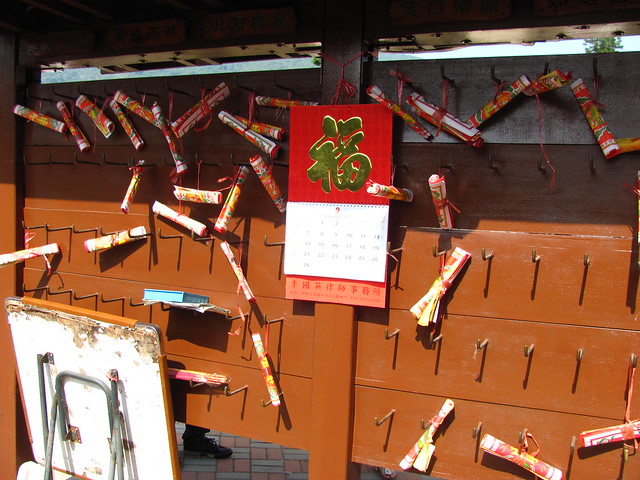
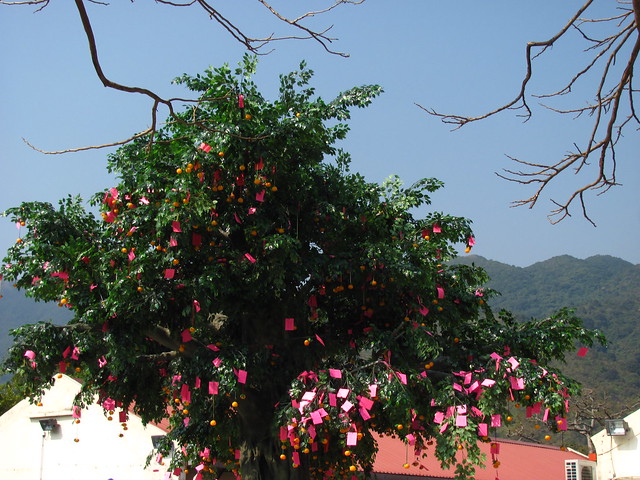
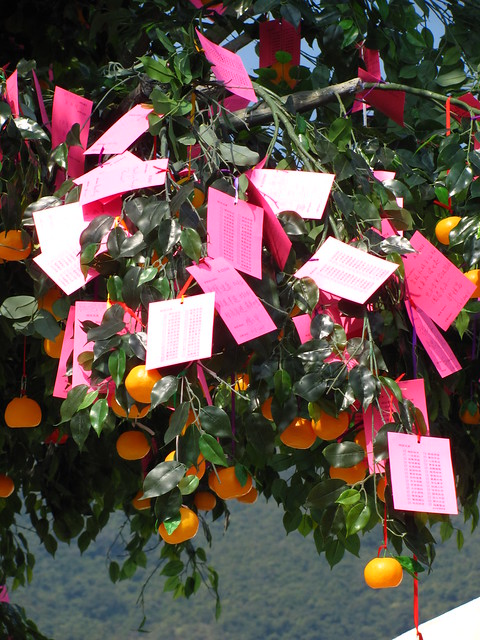

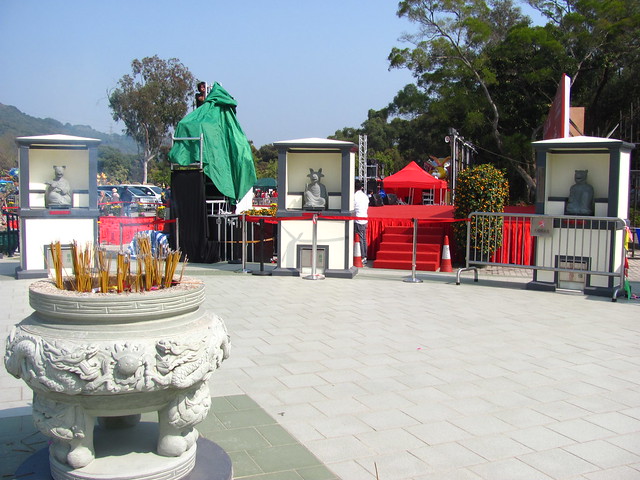




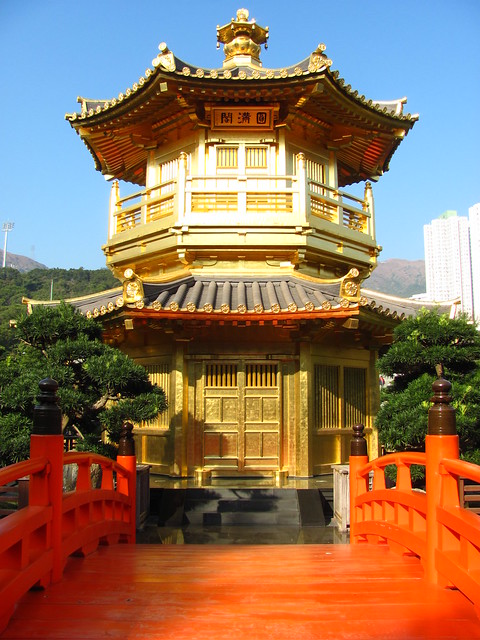

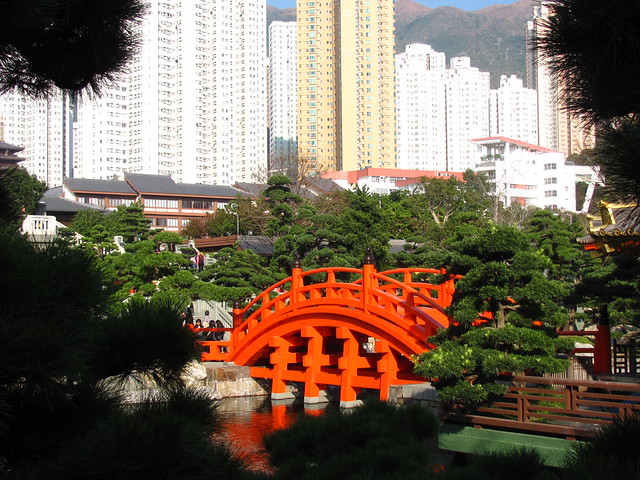
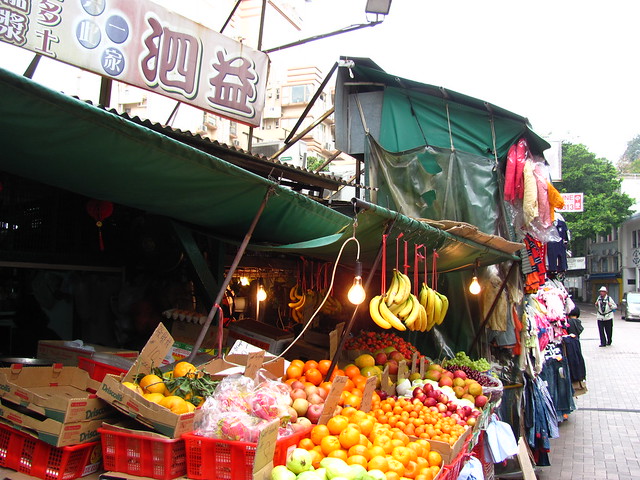

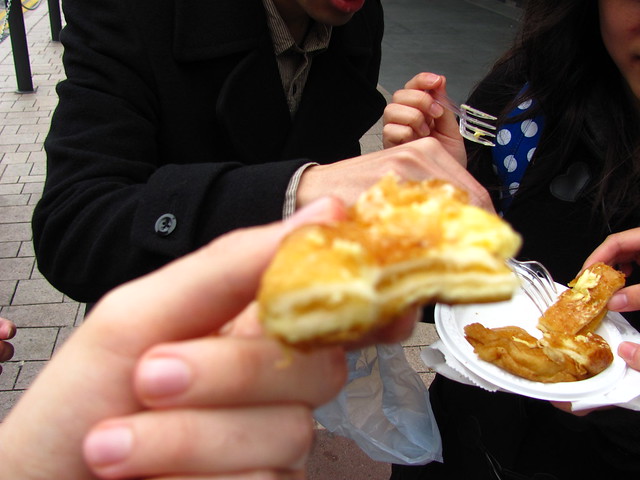

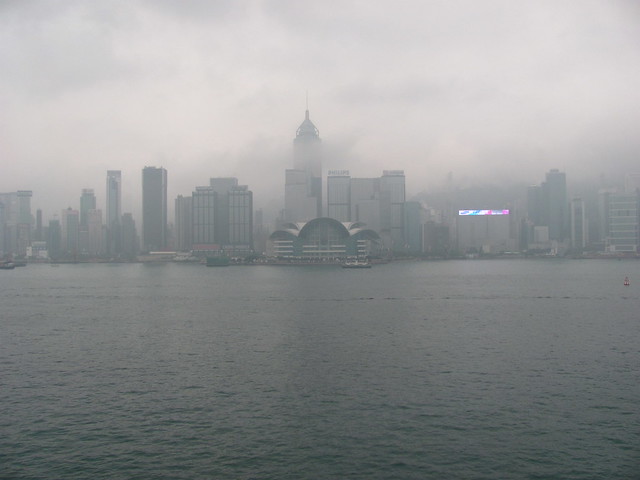

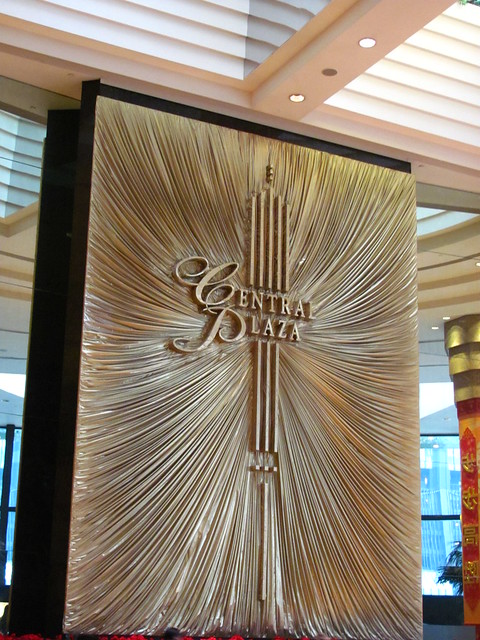
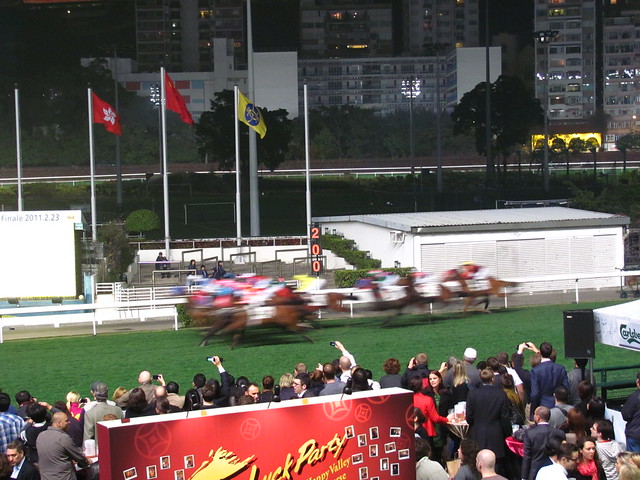
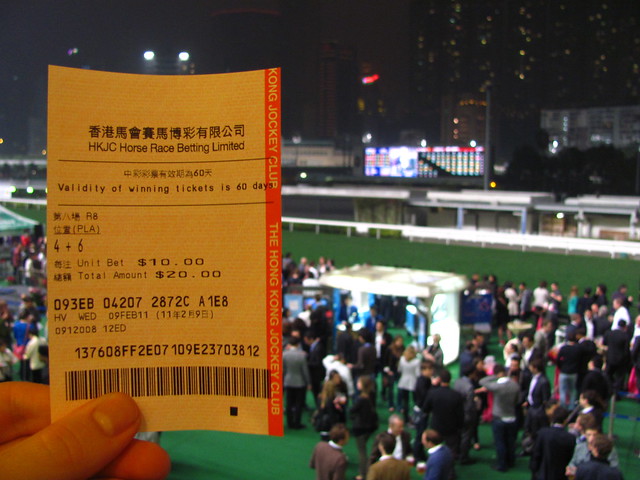
Comments